How to Identify and Care for a Cinnamon Cockatiel: A Guide
Dive into the world of Cinnamon Cockatiels, with their unique coloration. Learn how to identify them and provide the best care for these lovely birds.
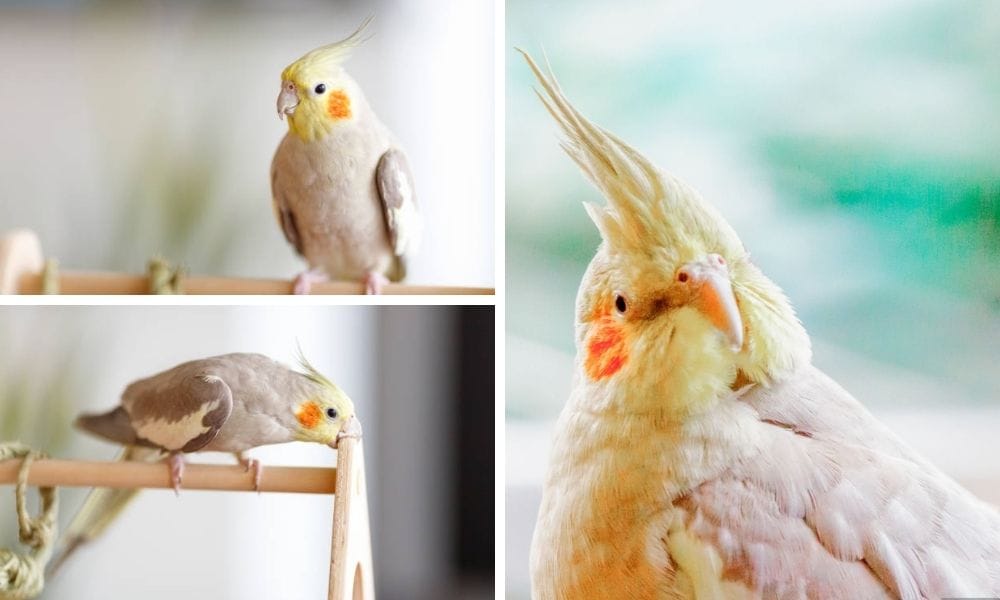
Cockatiels, with their charming personalities and distinctive crests, are part of the cockatoo family and have become one of the most popular pet birds worldwide. Among the various color mutations, the cinnamon cockatiel stands out with its warm, chocolate brown coloring and gentle disposition. This article will guide you through identifying a cinnamon cockatiel and provide essential tips for their care. Cockatiels make wonderful companions due to their affectionate and social nature.
Key Takeaways:
- Learn to distinguish cinnamon cockatiels from other mutations by their unique coloring.
- Understand the specific care requirements for cinnamon cockatiels to ensure their health and happiness.
- Discover how to create a nurturing environment for your cinnamon cockatiel, from diet to social interaction.
Identifying a Cinnamon Cockatiel
Cinnamon cockatiels are a beautiful variation of the grey cockatiel, with their brown pigment replacing the standard grey. This gives them a soft, warm appearance that is both striking and endearing. The cinnamon coloring is a sex-linked recessive mutation, which can make it a bit more challenging to sex cockatiels of this variety. Typically, males will have a bright yellow face without the yellow barring found on the tail and wings of females after their first molt. In comparison, normal cinnamon cockatiels also exhibit these visual cues, as the cinnamon mutation does not affect the visual indicators for identifying the sex of the bird.
The Unique Markings of Cinnamon Cockatiels
Cinnamon cockatiel may also come in combinations such as the cinnamon pied cockatiel or the cinnamon pearl cockatiels. These birds will have the characteristic pale yellow and brown pigment, but with additional patterns. For example, the cinnamon pied has irregular patches of clear color, while the cinnamon pearl has a scalloped pattern to their feathers. Bird enthusiasts often seek out these unique coloring variations, making them typically higher priced than other mutations.
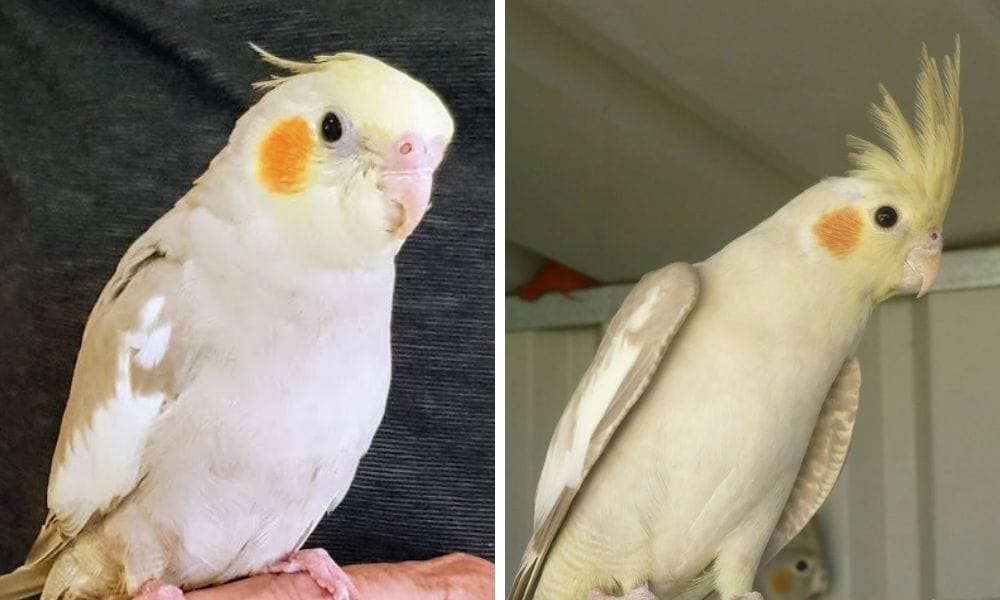
Caring for Your Cinnamon Cockatiel's Diet
A balanced diet is crucial for your pet cockatiel's health. Cinnamon cockatiels, like all cockatiels, thrive on a mix of high-quality pellets, fresh vegetables, and occasional seeds as treats. It's important to avoid foods that are toxic to birds, such as avocado, chocolate, and caffeine. Providing a variety of foods not only ensures a balanced diet but also keeps your bird mentally stimulated.
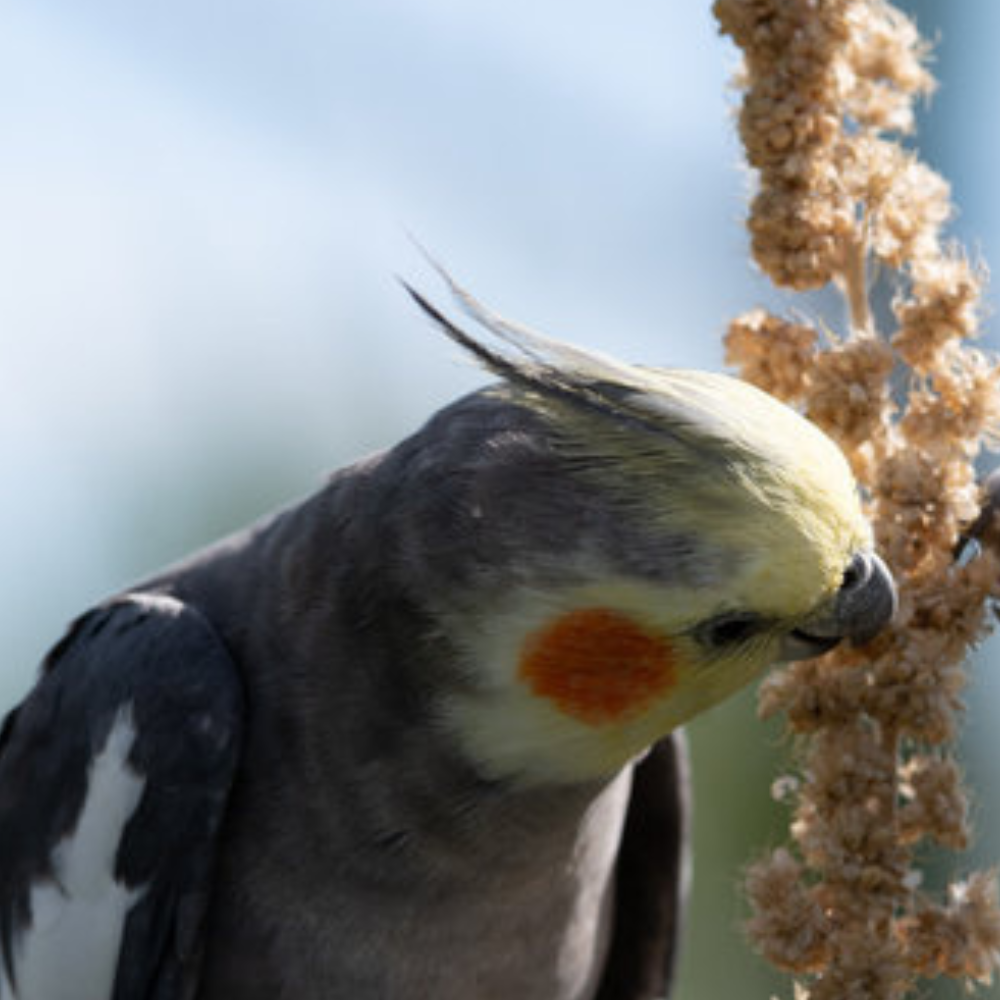
The Importance of Fresh Water and Supplements
Always ensure your cinnamon cockatiel has access to fresh water. You may also consider adding vitamins and minerals to their diet, especially if they are on a seed-based diet, which can be deficient in certain nutrients. Consult with a veterinarian to determine the best supplements for your bird's needs.
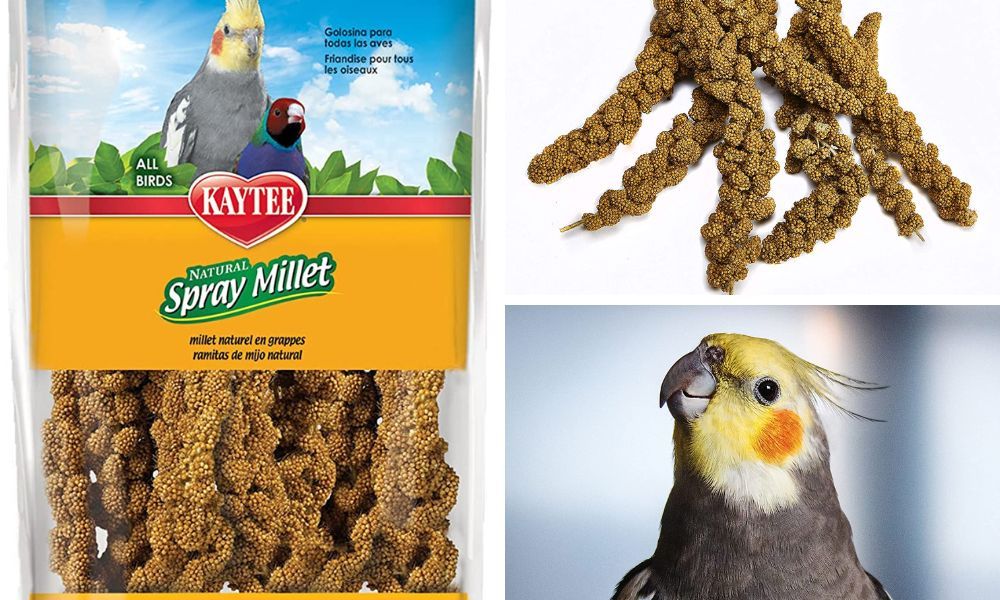
Creating a Safe Living Environment
The cage is your cinnamon cockatiel's home, and it should be spacious enough for them to stretch their wings and move around freely. Bar spacing should be narrow enough to prevent escape or injury. Place the cage in a part of your home where your bird can interact with the family without being exposed to dangers like kitchen fumes or predatory pets.
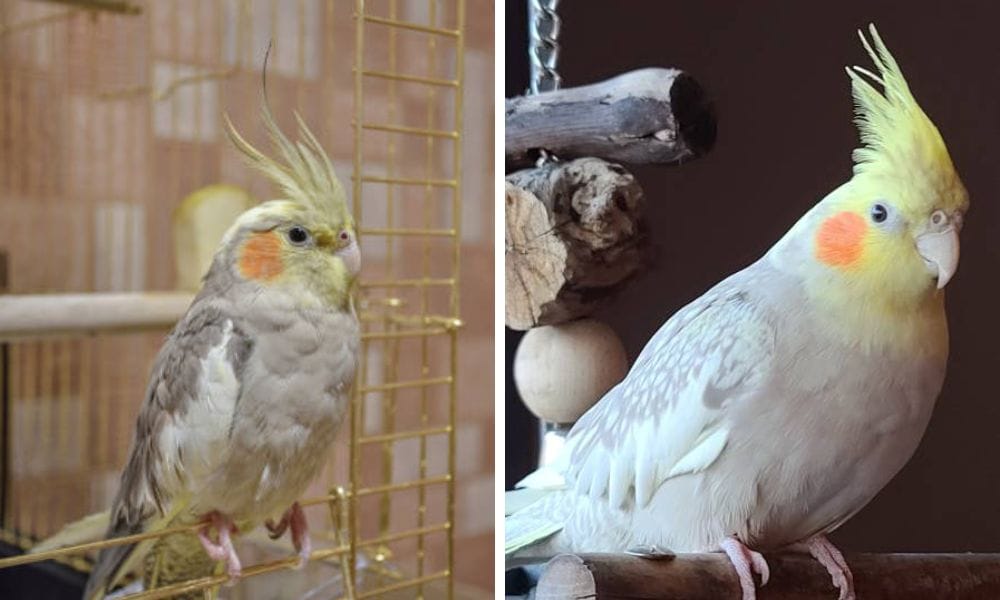
Choosing the Right Cage Accessories
Perches of varying diameters are essential for foot health, and toys will keep your cinnamon cockatiel entertained for long periods. Avoid toys with small parts that can be ingested or long fibers that can entangle your bird. Regularly rotate toys to keep your cockatiel's environment engaging and new.
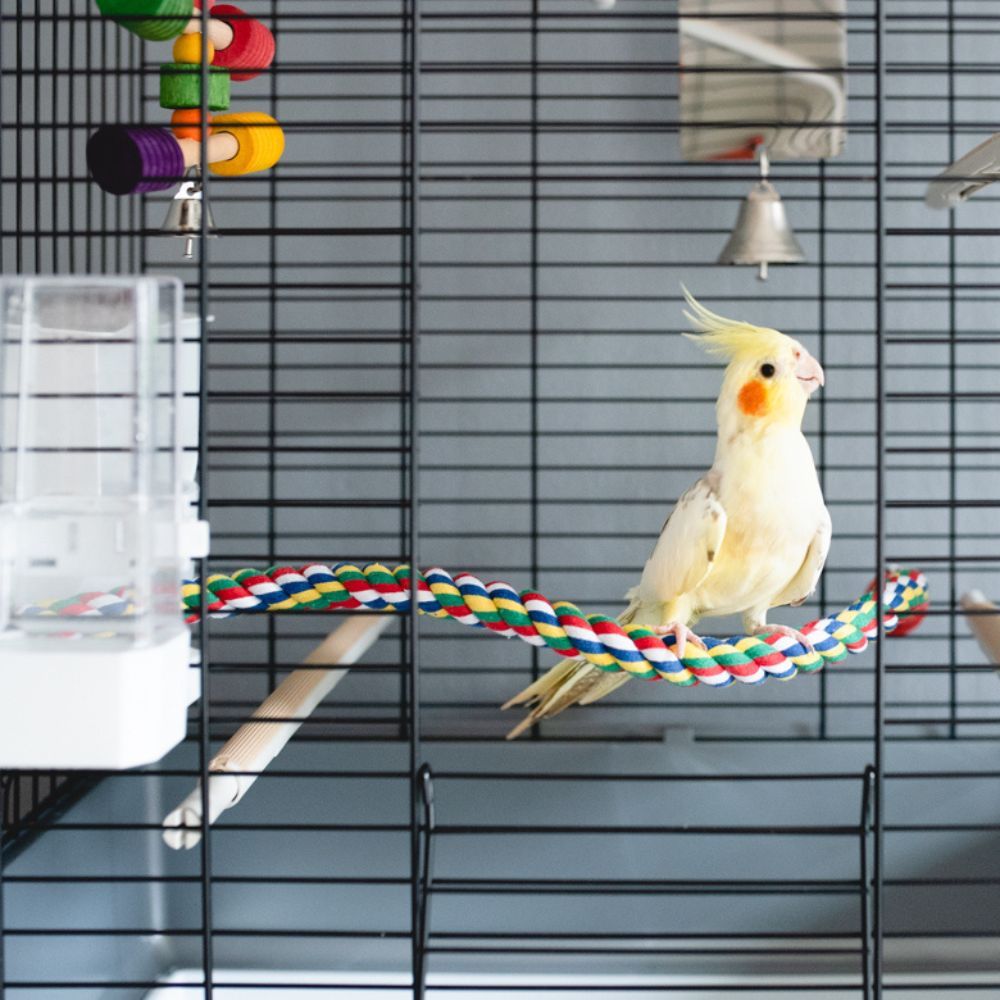
Understanding Cinnamon Cockatiel Behavior
Cinnamon cockatiels are known for being hardy birds with friendly personalities. They can mimic sounds and are quite social, often seeking interaction with their owners. Observing your bird's behavior will help you understand their needs and moods, whether they're content, scared, or seeking attention.
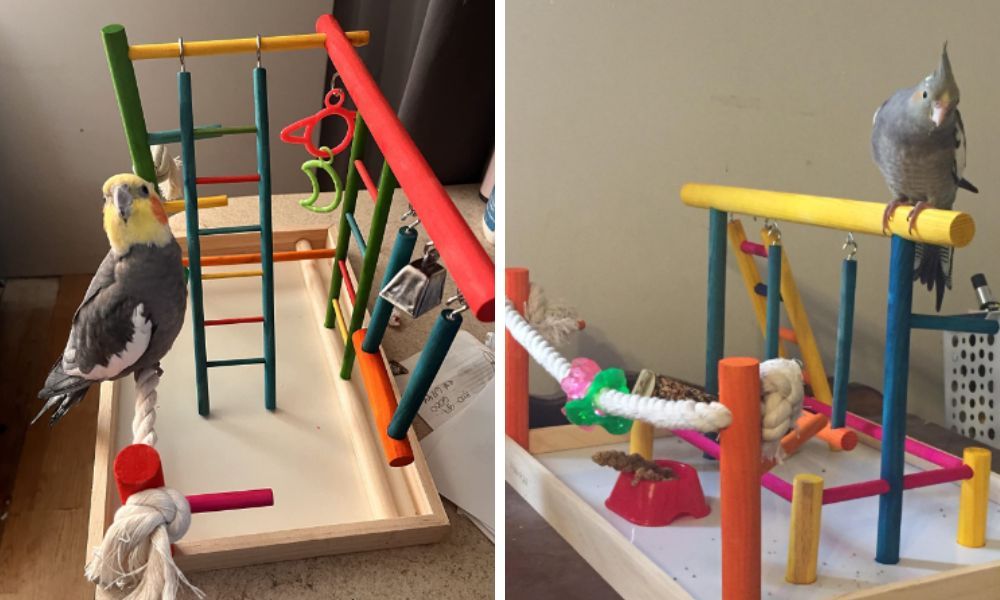
Social Interaction and Bonding
Cockatiels are flock animals and require social interaction to stay happy. Spend time each day interacting with your pet cockatiel, whether it's through talking, training, or simply sitting together. A lonely cockatiel can develop behavioral issues, so companionship is key.
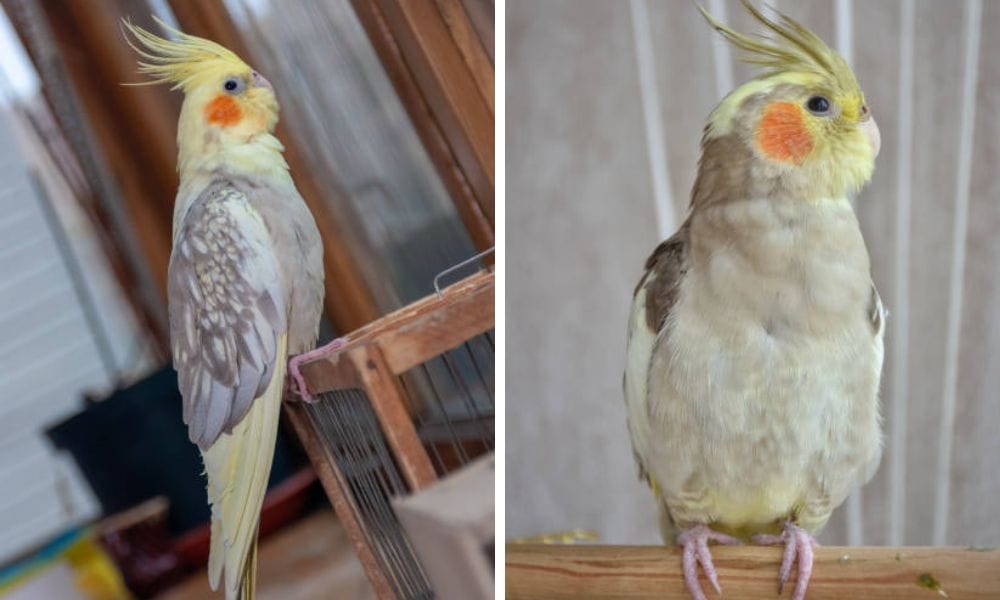
Deciphering the Cinnamon Pearl Cockatiel
Cinnamon pearl cockatiels are a captivating variety that bird enthusiasts adore for their unique color mutation and overall plumage. Unlike the standard cinnamon cockatiel, the cinnamon pearl has a lace-like pattern across its feathers, which is especially prominent in females. This sex-linked recessive mutation causes the feathers to have a pearlescent appearance, making them a standout among cockatiel species. Young birds exhibit this pearling more intensely, and it can fade as they mature, particularly in males. When looking at pictures or observing these birds in pet stores, you'll notice the warm, cinnamon shades blending with the white or pastel face, creating a stunning visual effect.
Isabelle cockatiels, often confused with cinnamon pearls, are another color mutation that bird lovers seek. The term "Isabelle" is less commonly used but refers to a combination of the cinnamon and pearl traits, resulting in a softer, more diluted coloration. These birds may also exhibit the characteristic orange cheek patch, which is a hallmark of many cockatiel mutations. When visiting bird stores or browsing descriptions of cockatiels online, it's essential to understand these subtle differences. Isabelle cockatiels are not only beautiful but also make good pets, with their gentle demeanor and the ability to form strong bonds with their proud mom or any devoted owner.

The Isabelle Cockatiel: A Rare Find
Have you ever heard of the Isabelle cockatiel? This pet bird is a true gem among cockatiel enthusiasts, boasting a unique color mutation that sets it apart from the more common varieties. The Isabelle cockatiel is characterized by a muted, dilute color palette, often displaying a soft blend of grays and fawns. This subtle beauty is the result of a sex-linked recessive mutation, which means that both parents must carry the gene for the offspring to exhibit the Isabelle traits.
Unlike the vibrant yellows and reds seen in other cockatiels, the Isabelle's understated elegance is a testament to the diversity within the species. When considering adding an Isabelle cockatiel to your family, it's important to seek out reputable breeders who can provide a clear lineage of the bird. This ensures that you're bringing home a healthy pet bird with the true Isabelle characteristics. Remember, due to their rarity, Isabelle cockatiels may require a bit more effort to find, but their distinctive appearance makes them well worth the search.
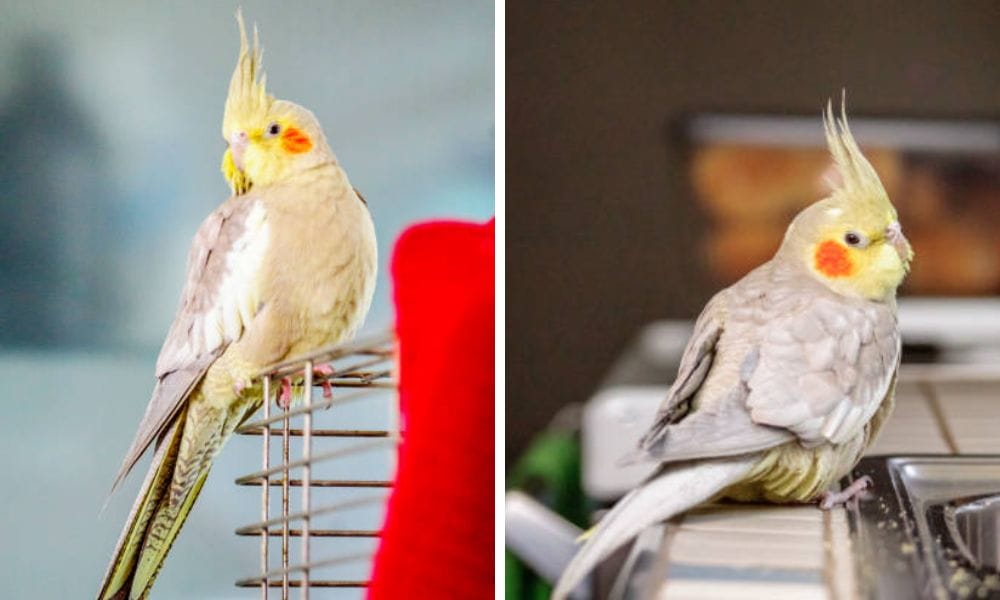
Understanding Sex-Linked Recessive Mutations in Cockatiels
When we talk about the genetics of cockatiels, the term "sex-linked recessive mutation" often pops up, especially in relation to the beautiful cinnamon variety. This type of mutation is carried on the X chromosome, which means that it can be hidden in a generation only to appear in the next. For instance, a male cockatiel carrying the cinnamon trait can pass it on to his daughters, but it won't be expressed in his sons unless the mother also carries the mutation. This genetic dance is what makes breeding for specific traits like the cinnamon coloration both fascinating and a bit unpredictable.
Understanding this concept is crucial for breeders who aim to produce cinnamon cockatiels. Since females have only one X chromosome, if they inherit the cinnamon mutation, it will be visible in their plumage. Males, on the other hand, have two X chromosomes, so they need to inherit the mutation from both parents for the trait to be expressed. This sex-linked inheritance pattern is why you'll often find more male cockatiels displaying the cinnamon coloration for sale, as they can be visually identified as carriers of the mutation more readily than females.
Description Cockatiels: A Guide to Their Varieties
Cockatiels are not just charming companions; they are also a kaleidoscope of colors thanks to the various mutations they can exhibit. When giving a description cockatiels often include a range of colors and patterns that can be quite bewildering to the novice. The cinnamon mutation, for example, gives the feathers a warm, brownish hue, which is a stark contrast to the normal grey coloration. This mutation affects the color of the feathers without altering the pattern, which means that a cinnamon cockatiel will still have the classic cockatiel face and tail markings, but in a softer, more diluted shade.
In addition to the cinnamon mutation, there are several other mutations that can affect a cockatiel's appearance, such as the lutino, pearl, and pied. Each mutation has its own unique characteristics and can be combined with others to create even more stunning variations. For those interested in the full spectrum of cockatiel mutations, it's worth diving into the genetics and understanding how these beautiful birds can inherit and express these diverse traits. Whether you're a breeder or just an enthusiast, the world of cockatiel mutations is endlessly fascinating and full of surprises.
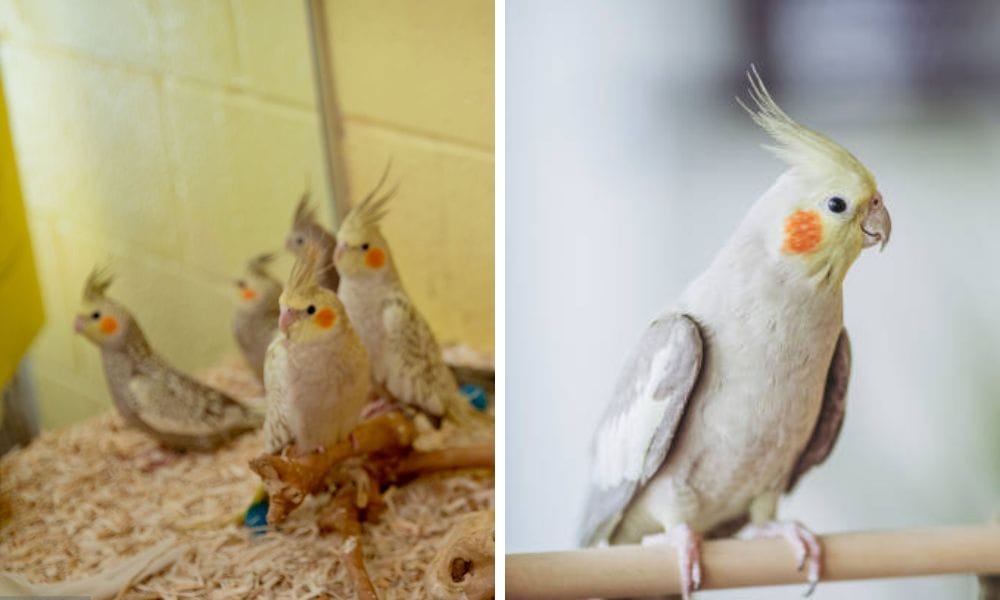
Caring for Baby Cockatiels: The Early Days
Raising a baby cockatiel is an incredibly rewarding experience, but it comes with a set of challenges that require patience and knowledge. From the moment these pet birds hatch, they depend entirely on their caretakers for warmth, nutrition, and safety. In the first few weeks, baby cockatiels need to be kept in a brooder with controlled temperature and humidity to mimic the conditions of a nest. It's also crucial to maintain a strict feeding schedule, using a specialized formula to ensure they receive all the necessary nutrients for healthy growth.
As they grow, these baby birds will begin to explore their surroundings and develop their personalities. During this stage, it's essential to start socialization and gentle handling to build trust and form a bond with your pet bird. Keep a close eye on their development, watching for any signs of illness or distress. With the right care and attention, your baby cockatiel will flourish into a sociable and affectionate companion, bringing joy and entertainment to your home for years to come.
The Evolution of Cockatiel Mutations
Cockatiel mutations, such as the dominant silver and lutino, have fascinated breeders and pet owners alike. The dominant silver mutation results in a bird with a reduced melanin production, giving them a silvery-grey appearance that can vary in intensity. This mutation affects the overall plumage without altering the cockatiel's natural patterns. On the other hand, the lutino breed is characterized by a stunning white or yellow body with red eyes, caused by a lack of melanin. This mutation is particularly popular in pet stores due to its striking appearance.
Barbara Rost, a notable figure in the world of parrots and cockatiels, has contributed significantly to our understanding of these mutations. Her work with these birds has helped to clarify the genetic components of various mutations, including the sex-linked recessive traits that lead to the beautiful variations we see today. For those interested in the wild ancestors of these pet birds, it's fascinating to note that these color mutations are a result of selective breeding, as wild cockatiels display a more uniform grey coloration with prominent white faces and the iconic orange cheek patch. The diversity in cockatiel mutations is a testament to the breed's adaptability and the dedicated efforts of breeders like Barbara Rost to enhance the species' beauty.
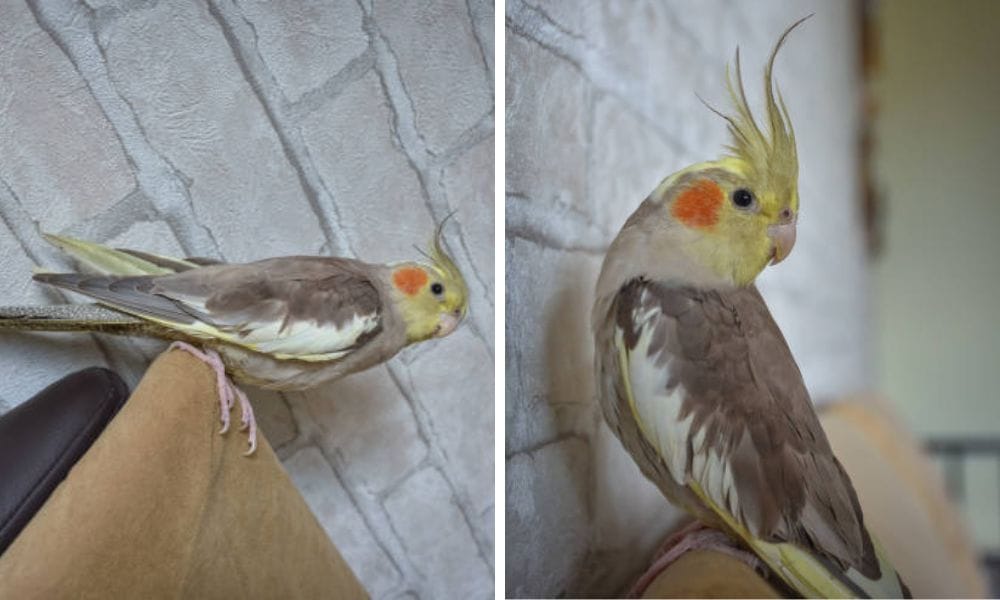
Health and Wellness Checks
Regular health checks are vital for your cinnamon cockatiel. Look for signs of illness, such as changes in behavior, feathers, or droppings. Establish a relationship with an avian vet who can provide expert care and advice for your bird. Preventative care is always the best bet for maintaining your cockatiel's health.
The Molting Process
Cockatiels molt once or twice a year, shedding old feathers and growing new ones. During this time, your cinnamon cockatiel may appear scruffy and require extra nutrition to support feather growth. Be gentle with your bird during molts, as the new feathers, called pin feathers, can be sensitive.
Breeding Cinnamon Cockatiels
If you're interested in breeding cinnamon cockatiels, it's essential to understand the genetics involved. As a sex-linked recessive mutation, breeding cinnamon cockatiels can result in different color mutations depending on the genetics of the parents. Consult with experienced bird breeders or genetic charts to predict the possible outcomes.
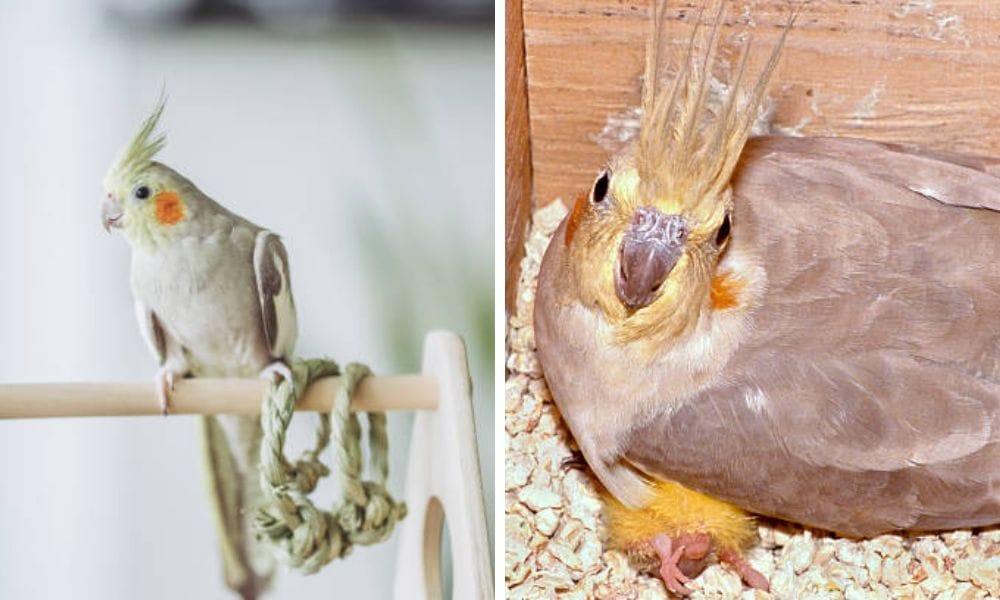
Training Your Cinnamon Cockatiel
Training is an excellent way to bond with your cinnamon cockatiel and keep their mind active. Start with simple commands and tricks, using positive reinforcement to encourage your bird. Training sessions should be short and enjoyable for both you and your cockatiel.
Wing Clipping: Pros and Cons
Some cockatiel owners choose to have their bird's wings clipped to prevent flying and potential accidents. However, flying is a natural and healthy activity for birds. If you decide to clip your cockatiel's wings, it should be done by a professional to ensure it's done safely.
Handling and Grooming
Regular handling will keep your cinnamon cockatiel tame and accustomed to human contact. Grooming, such as nail trimming and occasional baths, is also part of their care. Always be gentle and patient, as rough handling can damage your bird's trust.
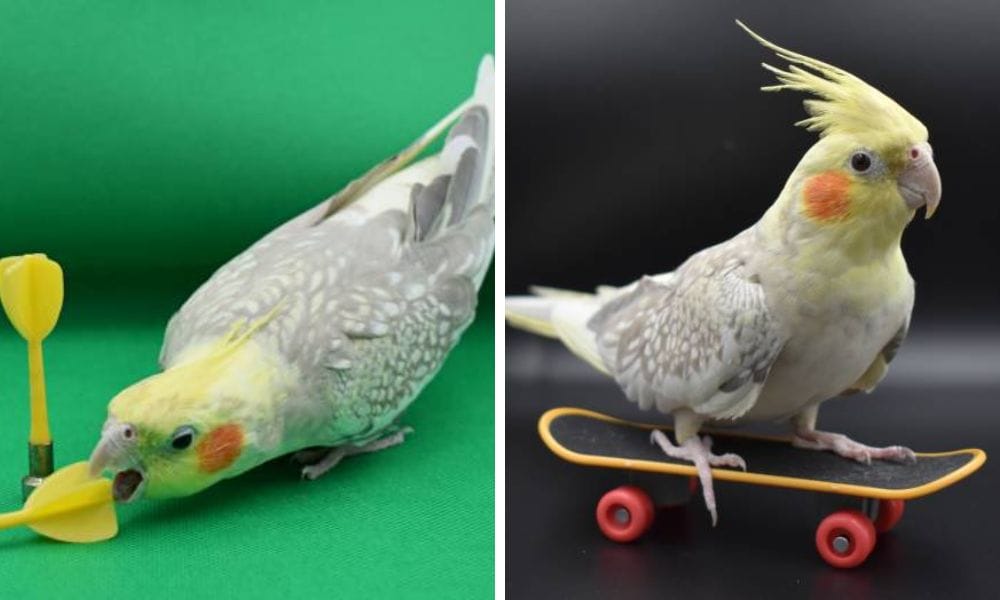
The Sounds of a Cinnamon Cockatiel
Cinnamon cockatiels can be quite vocal, especially during the morning and evening. They may whistle, chirp, or even learn to mimic certain sounds. Understanding and responding to your bird's vocalizations can strengthen your bond and provide mental stimulation for your pet.
When to Seek Veterinary Care
If you notice any signs of illness or abnormal behavior in your cinnamon cockatiel, it's crucial to seek veterinary care immediately. Early detection and treatment can make a significant difference in the outcome of many health issues.
Summary
Cinnamon cockatiels are a delightful addition to the parrot family, with their unique coloring and affectionate nature. Proper identification, a balanced diet, a safe and stimulating environment, and regular health checks are key to caring for these birds. By understanding their needs and behavior, you can ensure a long and happy life for your cinnamon cockatiel.
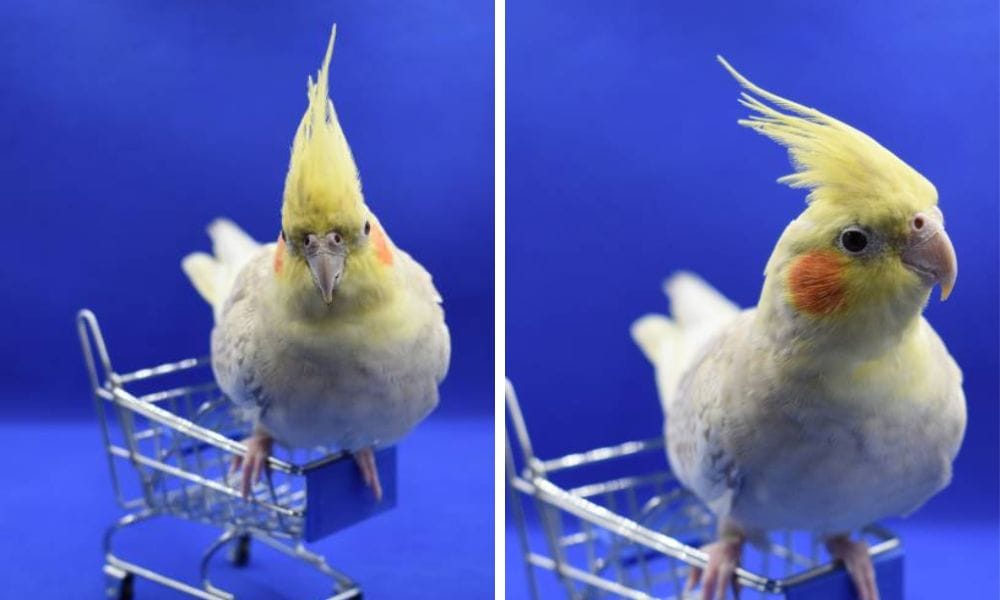
FAQ Section
Q: How can I tell if my cockatiel is a cinnamon mutation?
A: Cinnamon cockatiels have a warm, chocolate brown coloring instead of the standard grey. Males typically have a bright yellow face and lack the yellow barring on the tail and wings that females display after their first molt.
Q: What should I feed my cinnamon cockatiel?
A: A balanced diet for a cinnamon cockatiel should include high-quality pellets, fresh vegetables, and occasional seeds. Always provide fresh water and consult with a vet about any necessary supplements.
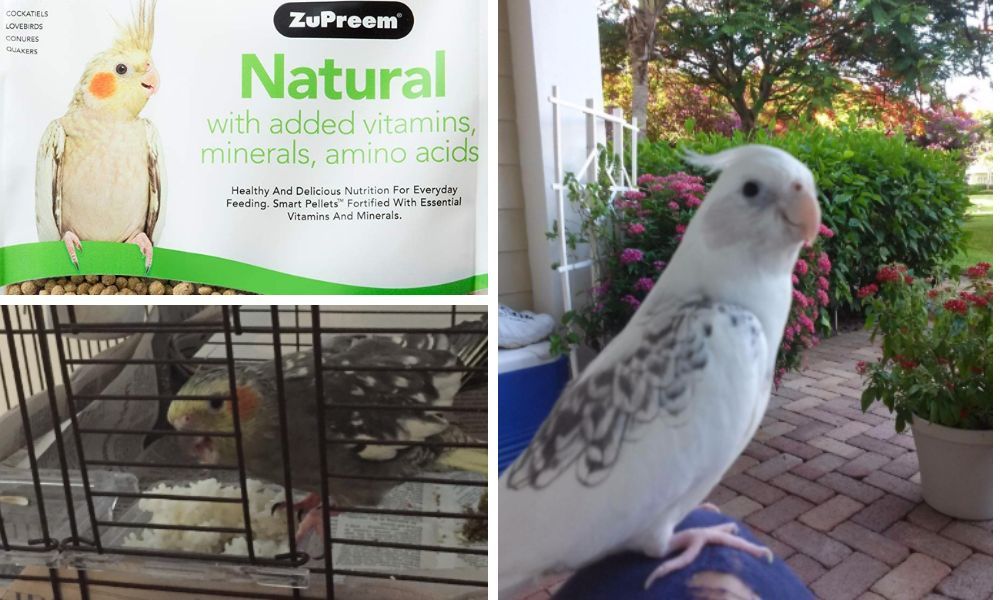
Q: How can I keep my cinnamon cockatiel entertained?
A: Provide a variety of toys and rotate them regularly to keep your bird's environment engaging. Spend time each day interacting with your cockatiel through talking, training, or simply being together to fulfill their social needs.

